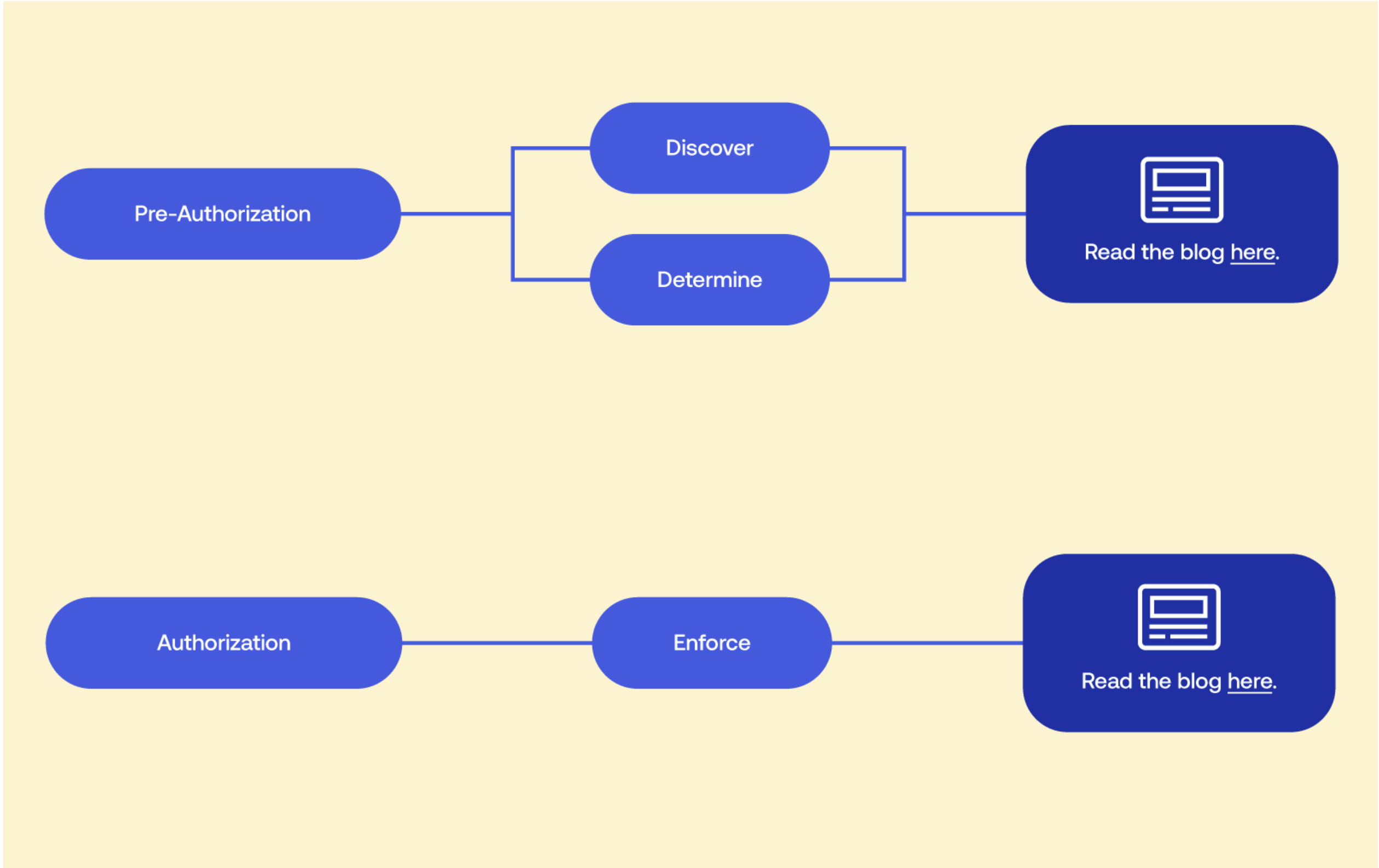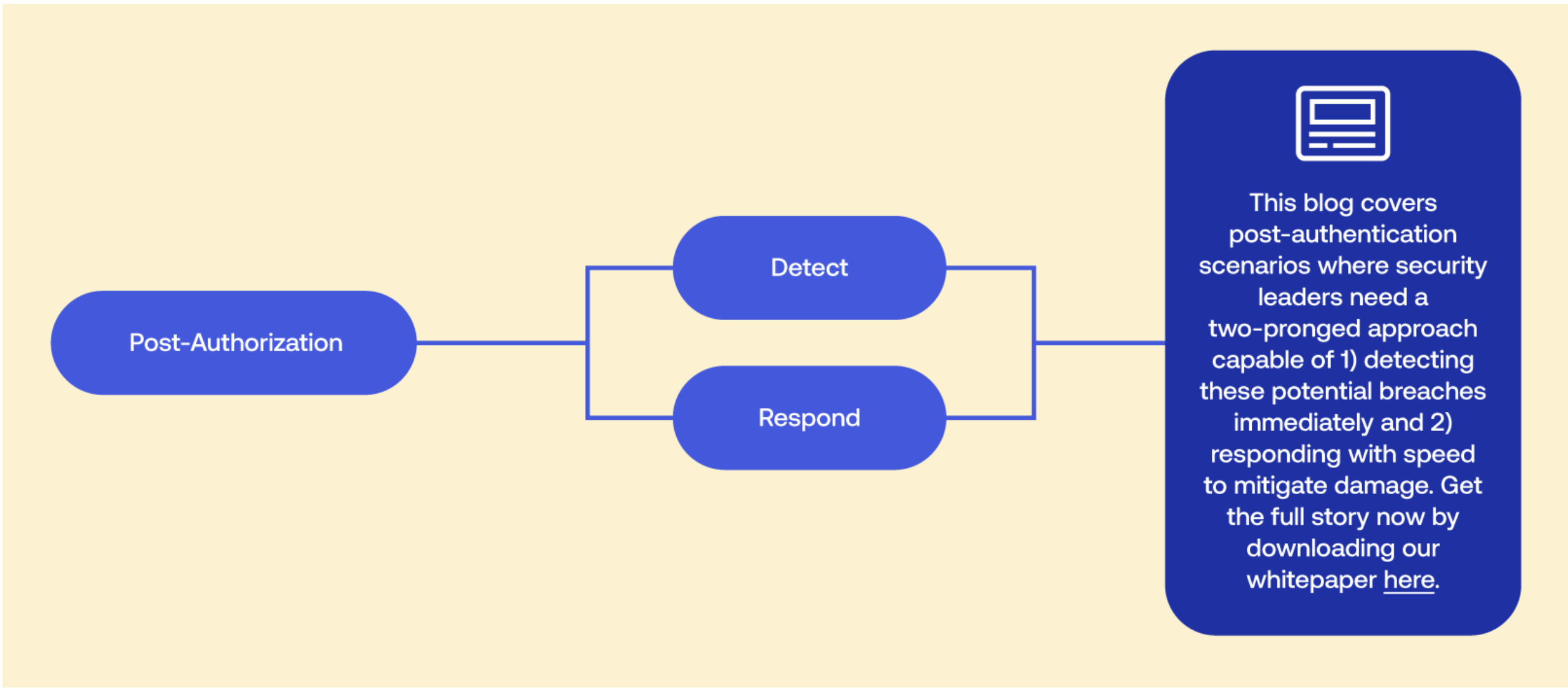If a data breach happens at your organization, you can’t afford to compromise on the speed and efficacy of your response. For the best possible defense against cybersecurity threats, security leaders need a comprehensive approach to Identity-powered security that supports risk mitigation in scenarios when would-be attackers have already exploited stolen credentials.


Managing post-authorization Identity security with individual point solutions delivers poor outcomes. When threat signals are siloed away into different systems and applications (each managed by a different team and with different permissioning structures), security leaders can’t detect and respond to potential threats with sufficient speed.
Security leaders need to go further than converging their Identity tools. They need to adopt a genuinely unified approach to Identity that offers more robust and forceful threat detection and response.
Okta elevates Identity and Access Management (IAM) across the spectrum of posture and threat detection, centralizing and tightly integrating every aspect of identity. By connecting seamlessly to your existing Identity providers (IdPs) and SaaS apps, Okta addresses post-authentication security concerns through a suite of products that deliver a 360-degree view of potential risks and automation-powered response strategies.
The result? Risk mitigation that stops bad actors in their tracks.
Here’s how we do it.

Strong threat mitigation begins with comprehensive threat detection and evaluation across the organization’s security infrastructure. Okta strengthens and unifies this detection function with a suite of products that continuously evaluate risk, leverage AI to determine risk scores, and analyze potential vulnerabilities in real time.
|
Okta Identity Threat Protection (ITP) | |
|
What it is |
A post-authentication group of detection and response features designed to boost resilience in the event of credential theft or misuse. |
|
What it does |
Integrates insights from across your security ecosystem to elevate threat visibility and deepen your understanding of your organization’s threat surface. |
|
How it does it |
|
|
The Identity Security Posture Management (ISPM) dashboard |
|
Okta’s ISPM dashboard gathers and analyzes industry threat intelligence to provide security leadership with a comprehensive picture of the organization’s Identity posture. Using the ISPM dashboard, security leaders can discover Identity-based misconfigurations within their security posture and take steps to remediate them.
For more information on Okta IPSM, check out our blog on pre-authorization security solutions. |

Our fortified, wide-ranging threat detection empowers security leaders to implement post-auth response strategies that leverage contextual decision-making. By marrying holistic analysis with automation-powered response triggers, Okta delivers forceful post-auth resilience against would-be attackers.
|
Okta Identity Governance (OIG) |
|
|
Identity Threat Protection (ITP) |
|
The impact of unified Identity
In 2023, the average cost of a data breach was $4.45 million. The stakes are too high to trust your post-auth security measures to a network of point solutions that fail to deliver integrated, real-time, actionable insights. Okta unifies every aspect of your Identity security, ensuring that your threat mitigation strategies are armed and ready when risk comes knocking.
|
Before unifying Identity with Okta |
After unifying Identity with Okta |
|
Information silos caused by fragmented, poorly integrated point solutions obscure the full picture of your organization’s Identity posture, leading to security gaps bad actors can exploit. |
A unified view of your organization’s attack surface and Identity posture prevents misconfigurations that lead to serious vulnerabilities, allowing security leaders to take immediate action on the most serious Identity-related threats. |
|
Poorly integrated point solutions either let attackers slip by or introduce so much continuous friction into the authentication process that it begins to impact employee productivity. |
Continuous monitoring uses first- and third-party risk signals to automatically make intelligent, risk-based decisions concerning access, ensuring the highest level of security without adding unnecessary friction. |
|
Fragmented lifecycle management of different applications and systems leads to lapses in proper provisioning and deprovisioning, creating new opportunities for credential abuse. |
Unified, automated lifecycle management streamlines all joiner, mover, and leaver functions, ensuring continuity for employees and security for the organization’s sensitive resources. |
For more information on the other stages of threat protection, check out our blogs on the unified response to pre-auth and auth security.
If you’re looking for more information on unified Identity in general, check out our solution brief.






